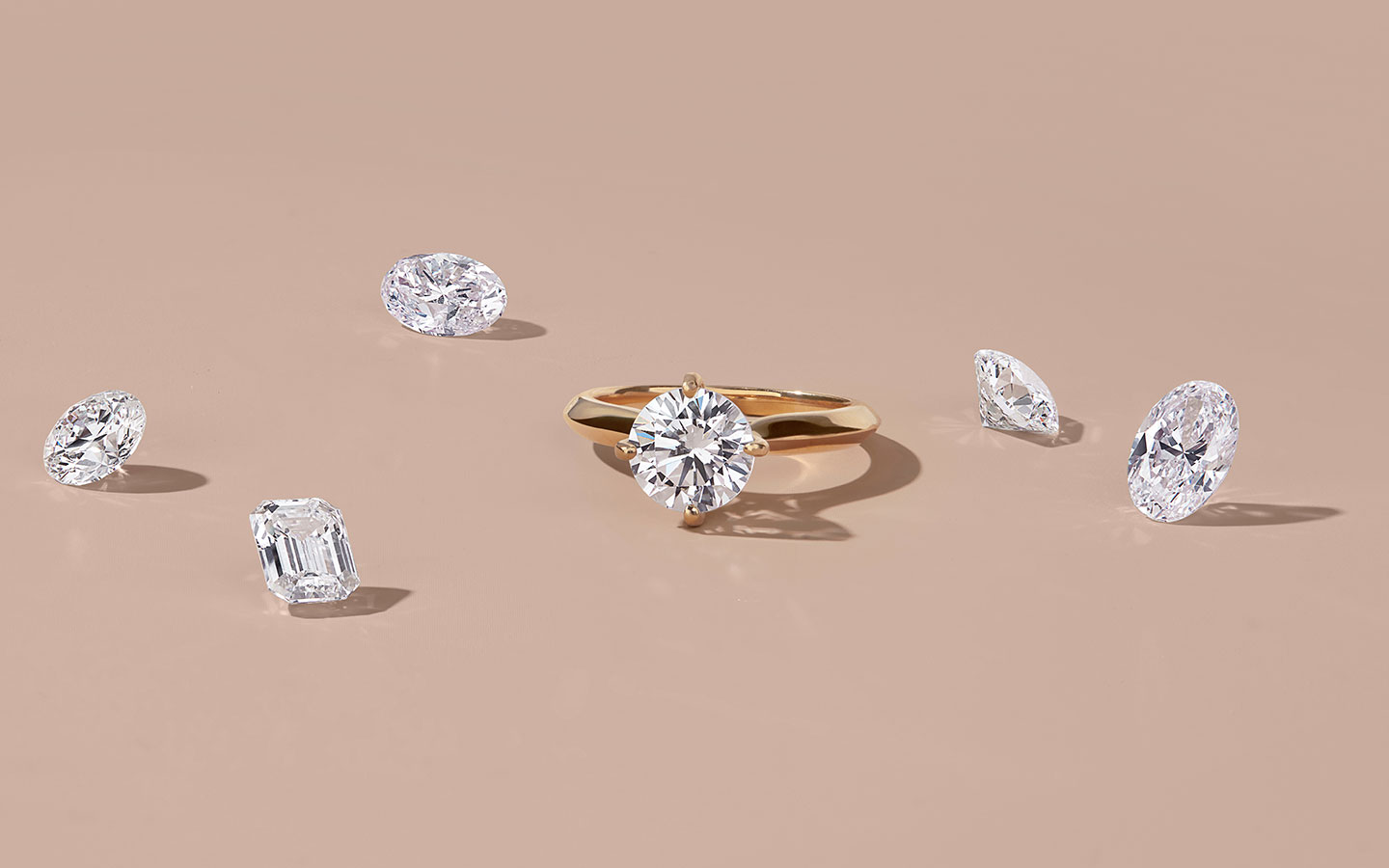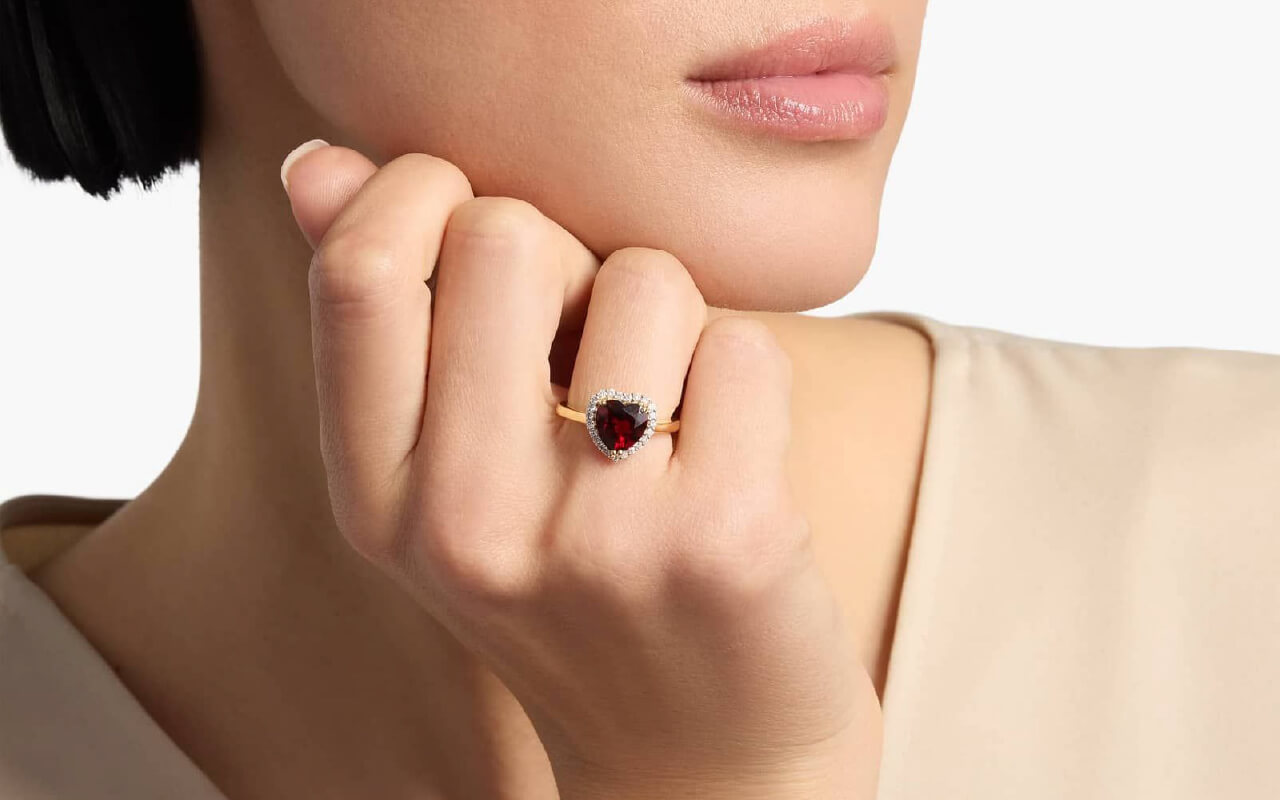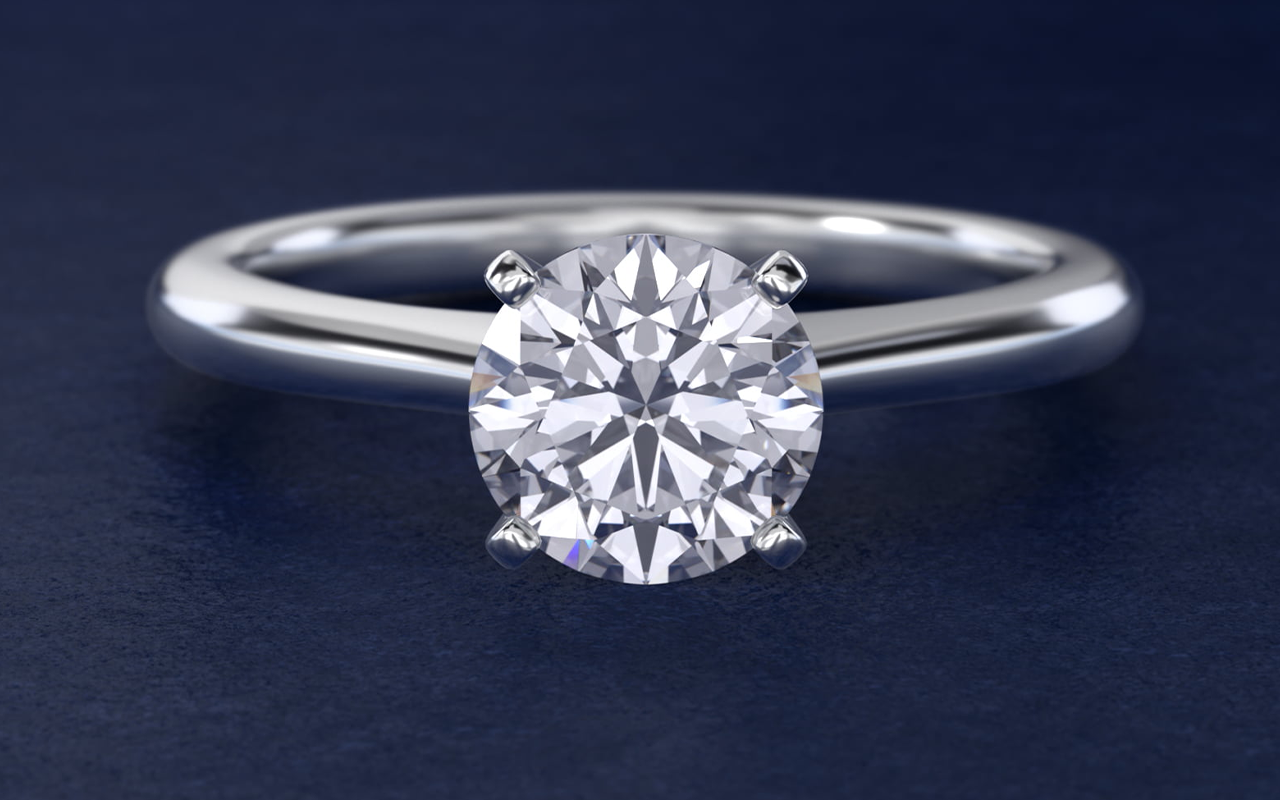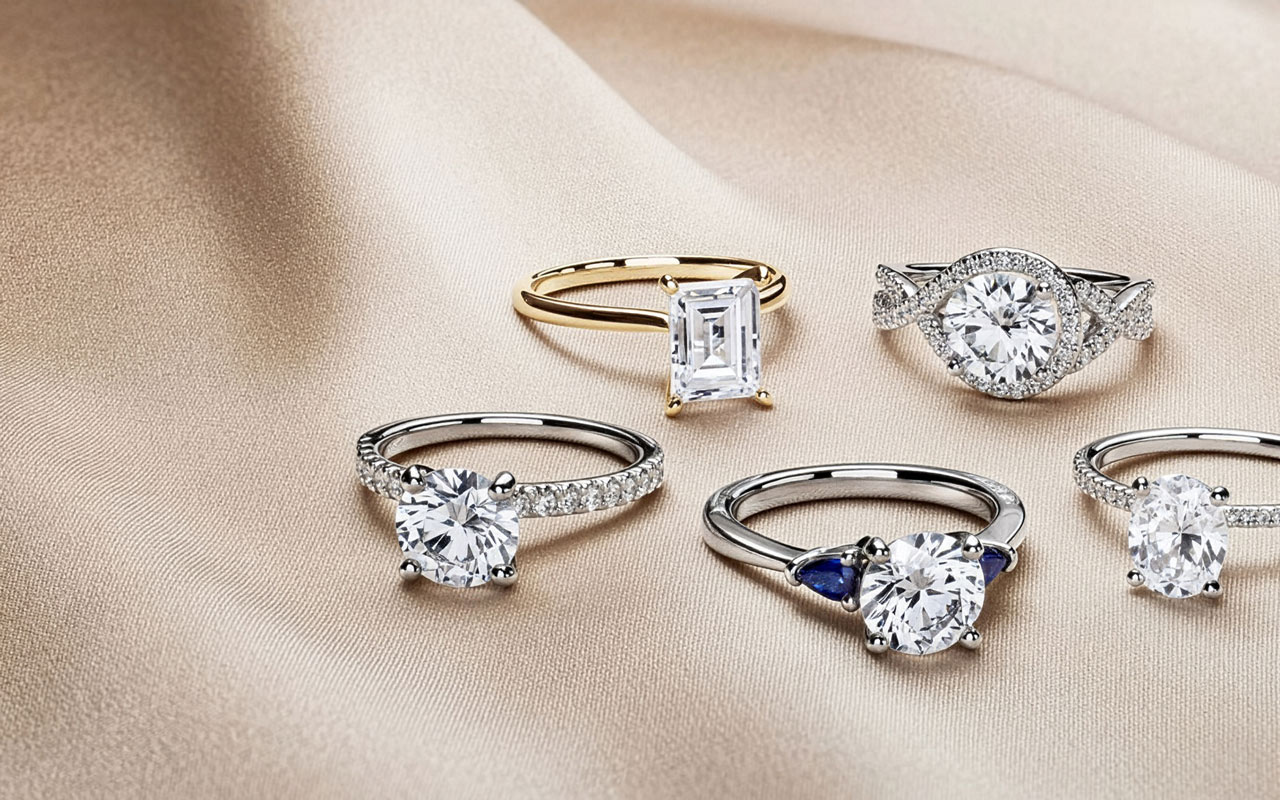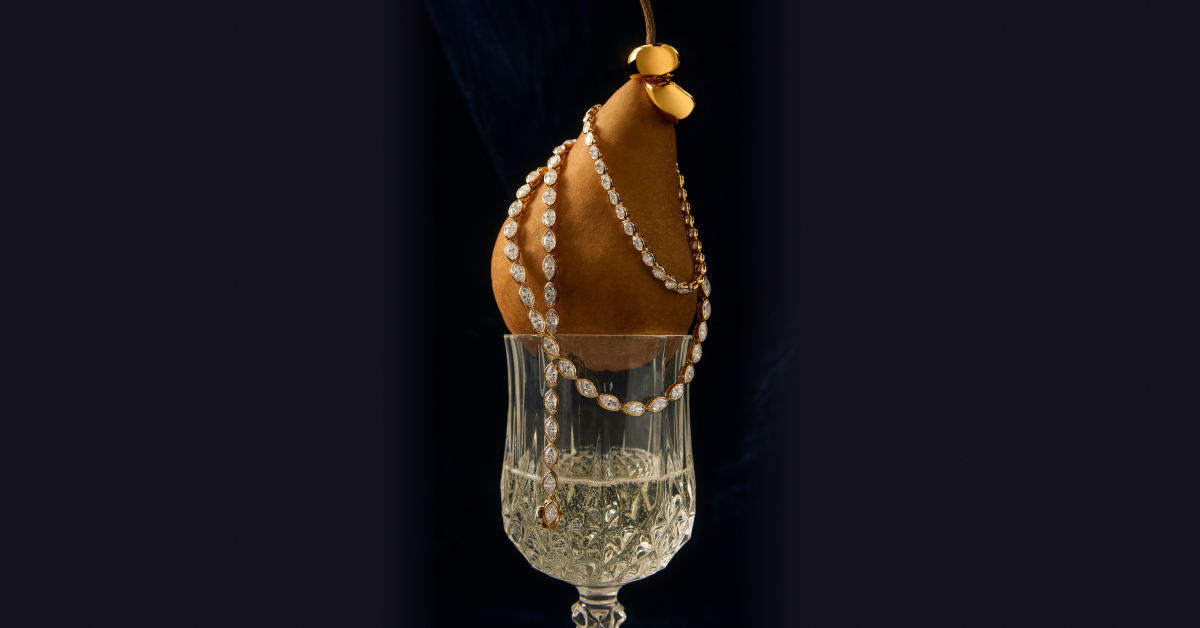Diamonds are incredibly popular gemstones, bringing unparalleled beauty and incredible durability. From engagement rings to earrings, these gems are brilliant additions to any jewelry wardrobe.
There are many qualities to keep in mind when buying a diamond such as the 4Cs, fluorescence and shape. Knowing the different diamond quality factors and their impact on a specific diamond’s appearance, durability and value used to require the help of an expert jeweler. But now, it’s easier than ever to understand the exact specifications of a given diamond thanks to increasingly ubiquitous diamond certifications and reports.
Shopping for diamonds has been demystified with the help of organizations such as the Gemological Institute of America (GIA) and the International Gemological Institute (IGI). These independent grading labs assess loose diamonds and provide reporting on their most notable qualities with consistent measurements and parameters. This makes it easy for everyday shoppers to browse a wide array of gems while understanding how they all stack up against each other in main categories of cut, color, carat and clarity.
Whether you’re new to buying diamonds or you’ve purchased these enchanting gemstones before, a little knowledge goes a long way. We’re taking a look at two of the more popular diamond grading companies to determine which diamond certification is best when comparing GIA vs IGI.
About Diamond Certification

Diamonds aren’t automatically graded during their journey to jewelry pieces. Instead, some jewelry stores and online jewelers choose to have their gems graded before they’re listed for sale. Doing so helps empower customers while providing transparency about the gemstones.
Many people in search of diamond jewelry will seek out IGI or GIA certified diamonds. This means they’re looking for diamonds that have been assessed by GIA or IGI for the 4Cs and additional factors. This is a service provided by GIA, IGI and several other companies, but the result isn’t exactly a certification. Instead, it’s a diamond grading process that culminates in a diamond grading report.
The terms diamond certification and diamond grading report are often used interchangeably. Typically, a diamond receives a grading report, not an actual certification. These reports are compiled by experts after a rigorous assessment of a diamond’s crucial qualities and features. They can be called dossiers, reports, gradings or other terms. But in general, these reports are about the grading of a diamond, not an actual certification.
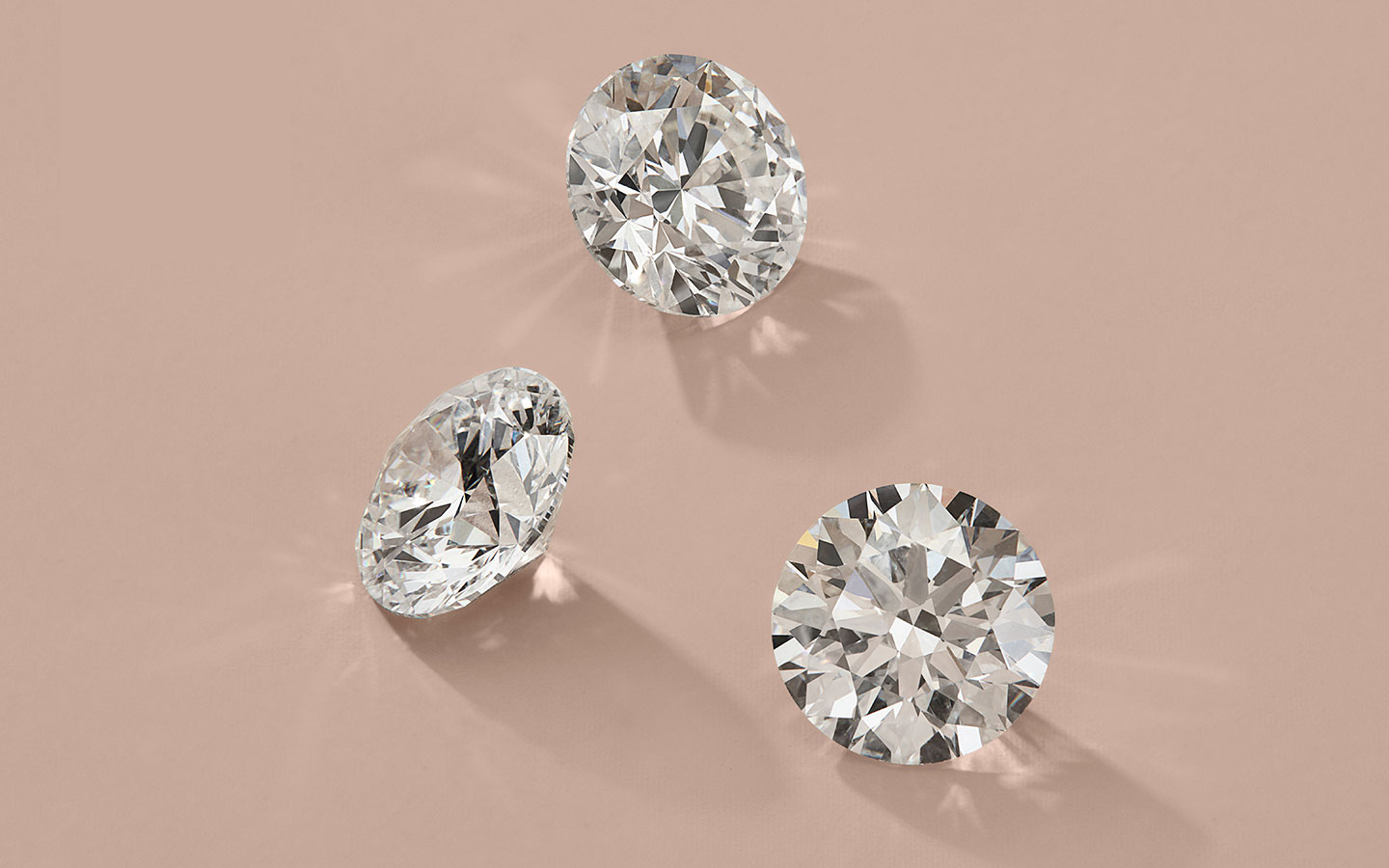
When most people are looking for certified diamonds, they’re actually looking for graded diamonds. But it’s an easy mix-up, considering that diamonds graded through trusted companies typically receive watermarked and traceable reports that can feel like certificates. A GIA or IGI graded diamond may often be called a certified diamond as well.
The two most popular companies that grade diamonds are GIA and IGI.
What is GIA?
The Gemological Institute of America, commonly known as its abbreviation GIA, is a nonprofit institution based in Carlsbad, California. GIA was founded in 1931 and is credited with creating the standardized 4Cs grading system for diamonds. They provide objective, laboratory-exact reports for gemstones including natural diamonds, lab diamonds, colored gemstones and pearls.
In addition to providing grading reports of gemstones, GIA also offers a variety of private education programs both online and on-campus at their locations worldwide. Programs include the Applied Jewelry Professional Program, the Graduate Diamonds Program, the Graduate Gemologist Program and the Jewelry Design & Technology Program.
GIA Diamond Grading
All gemstones and diamonds receiving GIA grading are assessed at GIA’s independent labs by their highly trained experts. Upon arrival to the lab, the diamond is given an internal identification number to keep its owner anonymous to encourage truly objective grading. From there, its proportions, angles and facets are measured with precision equipment. The diamond carat is weighed electronically to the fifth decimal place.
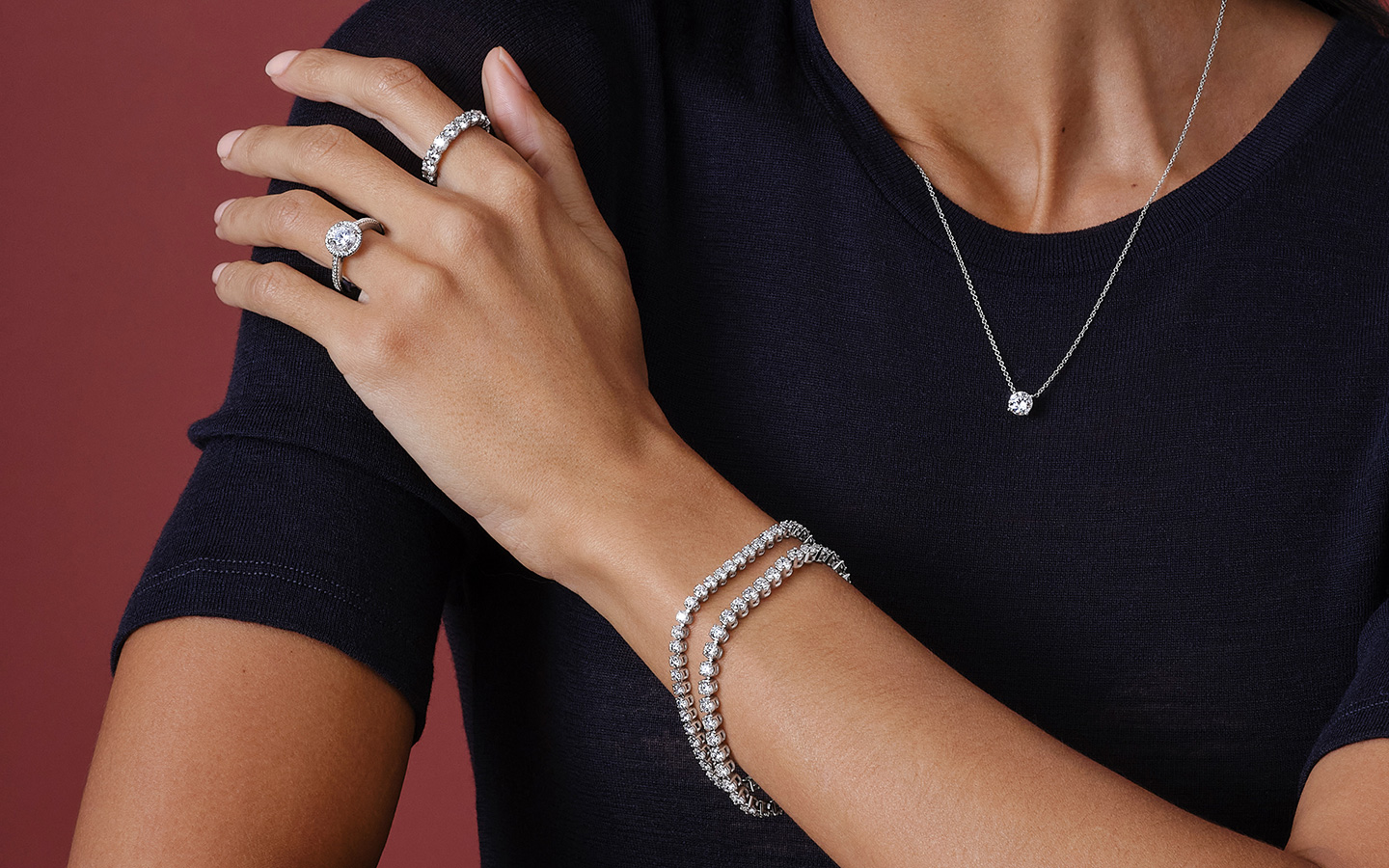
The diamond then receives additional inspection to determine its source of natural or lab made. Diamonds are also inspected in a standardized viewing setup for color grading. If a diamond has received any treatments, they will also be assessed at this stage.
Clarity and finish are part of the GIA assessment, using 10x magnification to plot any inclusions or points of interest. The cut of the diamond, its clarity and its proportions are all mapped out clearly on the gem’s GIA report and checked by additional graders when necessary.
Once the diamond has been fully analyzed, its 4Cs and any additional qualities are collected on its report. GIA also has laser inscription available as a part of their grading process. The inscription can only be viewed at 10x or greater magnification. It can include a logo, the diamond’s GIA report number or even a special message on the gem’s girdle or circumference.
Here at Blue Nile, we offer GIA reporting with many of our loose diamonds. This kind of reporting accurately illustrates a diamond’s qualities on a standardized scale, making it easy to understand the exact specs of a given diamond. You can click on the GIA icon for an individual diamond to see its exact electronic report.
What is IGI?
Founded in 1975, the International Gemological Institute is also known as IGI. The organization is based in Antwerp, Belgium. IGI offers expert grading for diamonds, gemstones, lab diamonds and finished jewelry pieces. Their grading systems utilize objective assessments from jewelry experts in controlled settings.
They also offer educational programs including the Polished Diamond Course, the Pearl Course, the Jewelry Design Course and the Retail Support Program. Many courses can be completed online through their eLearning platform or at a campus in their worldwide network of locations.
IGI Diamond Grading
All gemstones, diamonds and jewelry pieces receiving IGI grading are assessed in controlled laboratory settings. For diamonds, this involves an initial screening to determine whether the gem is natural or lab made, along with any permanent treatments the diamond may have received.
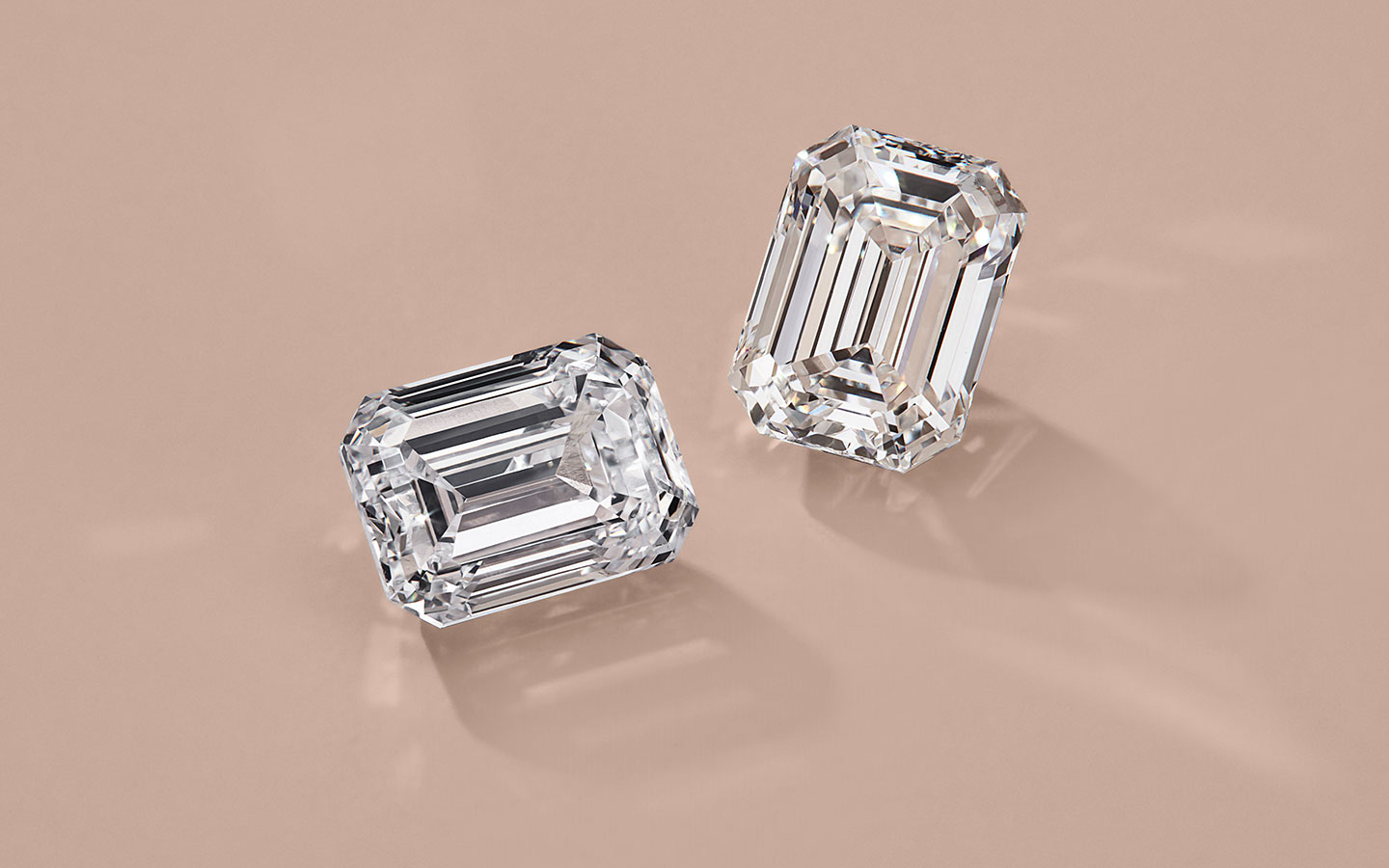
From there, the diamond is expertly assessed for its cut, color, carat weight and clarity. All of the elements are gathered into an IGI report that shows the individual diamond’s 4Cs ratings along with a plot of any inclusions. This report is available electronically and can be traced back to IGI’s labs.
IGI offers additional traceability and security for the diamonds it grades. The organization offers screening and sorting services alongside security seals and additional organization throughout the grading process. Some jewelers opt to have IGI inscribe graded diamonds with a proprietary Laserscribe® service that can add a logo, the diamond’s IGI report number or even a personal message on the gem’s girdle our exterior circumference.
Many of our diamonds and custom lab grown diamond jewelry styles come with IGI certification. To view a diamond’s IGI report, simply click on the IGI report icon for that diamond to see its details.
GIA vs IGI
When it comes to IGI vs GIA, these diamond grading companies share many similarities. Both GIA and IGI offer electronic reports of the 4Cs and additional features of note for natural and lab grown diamonds. They also both offer their own unique internal tracking numbers for their graded gems along with small inscriptions of these numbers. A diamond’s report can be easily checked on the GIA or IGI website, and the reports from both companies can feature graphics to showcase that exact gem’s qualities.
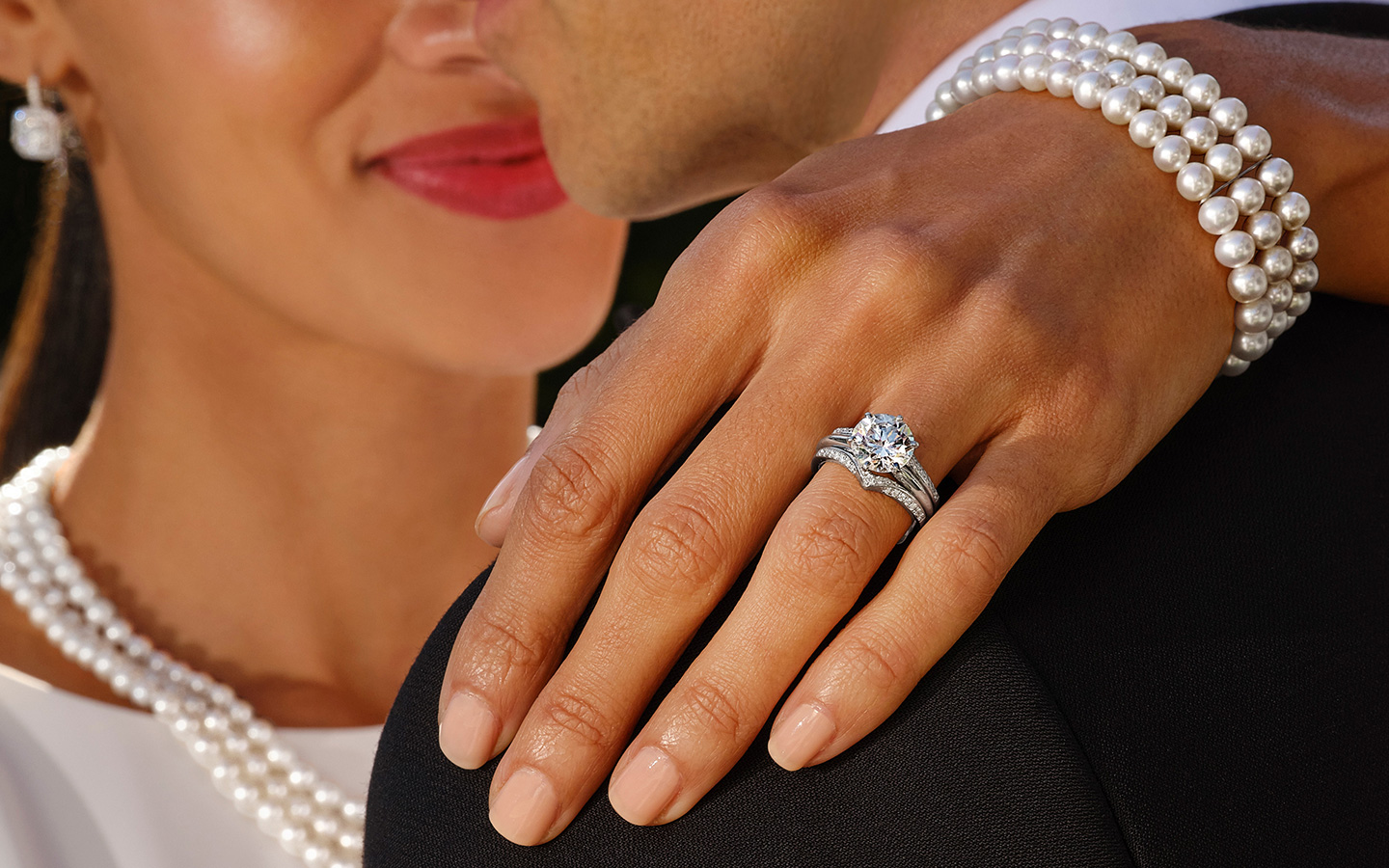
Both companies operate their own labs and use their own proprietary techniques to objectively analyze gemstones. While GIA focuses on loose gemstones, IGI provides grading for both loose gems and complete jewelry pieces.
GIA’s Precise Diamond Grading
Having pioneered the 4Cs, GIA has continuously perfected the art of reliably grading the most important diamond qualities. In addition to standardizing the 4Cs as the benchmark of diamond grading, GIA has constantly implemented the latest technologies to accurately measure many diamond elements with extreme precision.
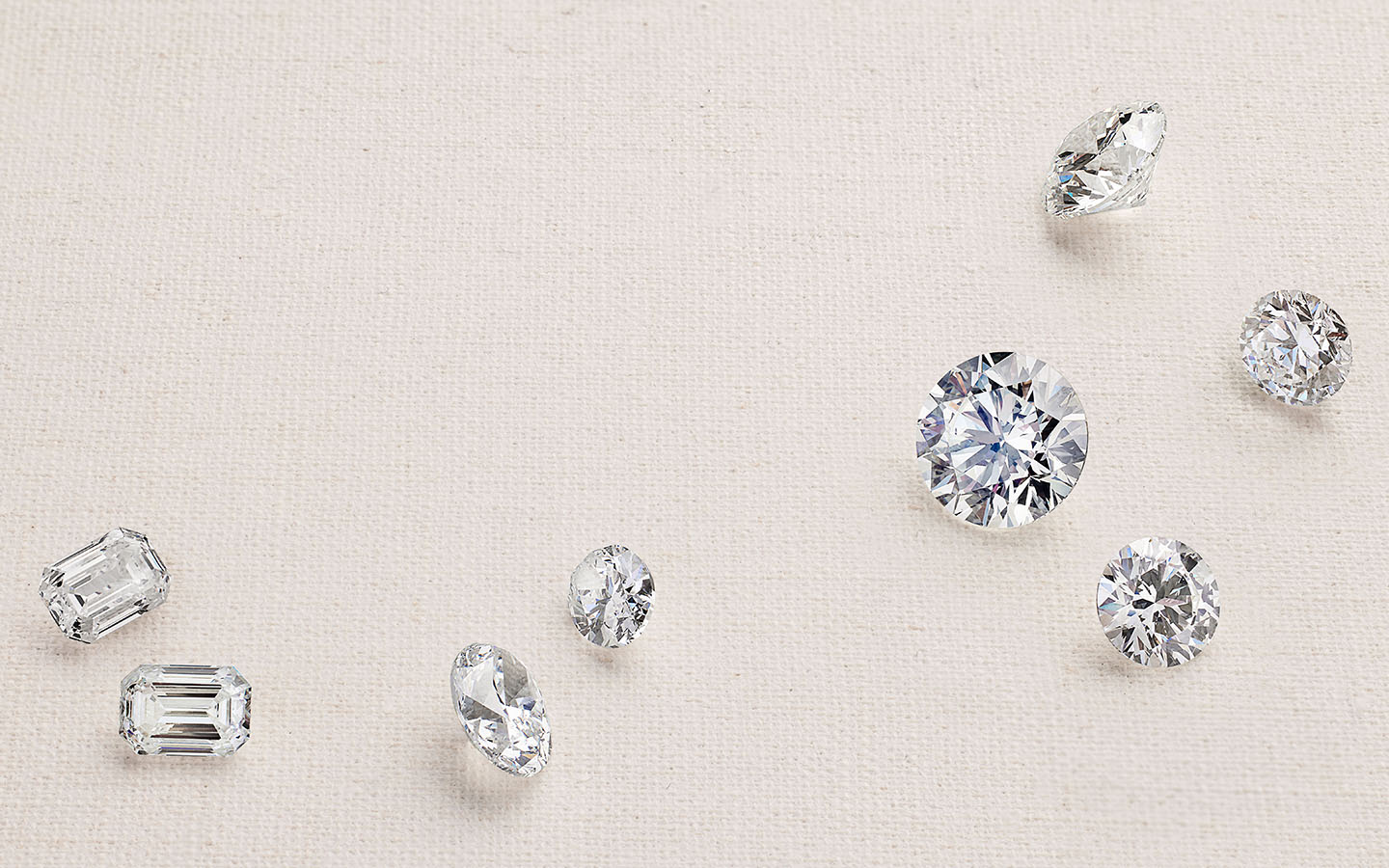
GIA’s continued commitment to anonymity during the grading process allows GIA certified diamonds to receive accurate analysis. Additional transparency regarding review methods and easily accessible fee schedules help to further cement GIA’s honesty and reliability as one of the most trusted diamond grading companies.
Diamonds with GIA reports have undergone detailed review and truly objective inspection that makes them some of the most vetted diamonds available. A diamond with a GIA report, often called a GIA certified diamond, is one of the most accurately graded gems available. You can trust that a GIA diamond will be of the quality described in its detailed report.
IGI’s Expert Jewelry and Diamond Reports
IGI offers unparalleled precision for grading diamonds, gemstones and even completed fine jewelry pieces. With so many different grading report options and the same exacting standards for every assessment type, IGI certification has become a trusted designation.
You can trust that any gemstones, jewelry and diamonds with IGI reports are accurately graded for their most important aspects. This includes the 4Cs, the details of the graded jewelry’s construction and the quality of any certified gemstones. IGI graded diamonds are especially popular.
The Best Diamond Grading Report
Both GIA and IGI offer reliable diamond grading reports that can help you confidently shop for natural and lab grown diamonds.
The best diamond certification is one that accurately describes a diamond’s 4Cs and any additional qualities of note through expert analysis and consistent diamond grading reports. Both IGI and GIA diamond certifications offer this high-quality, reliable and accurate analysis and reporting, making them some of the best choices for diamond certification.
The Importance of Diamond Grading
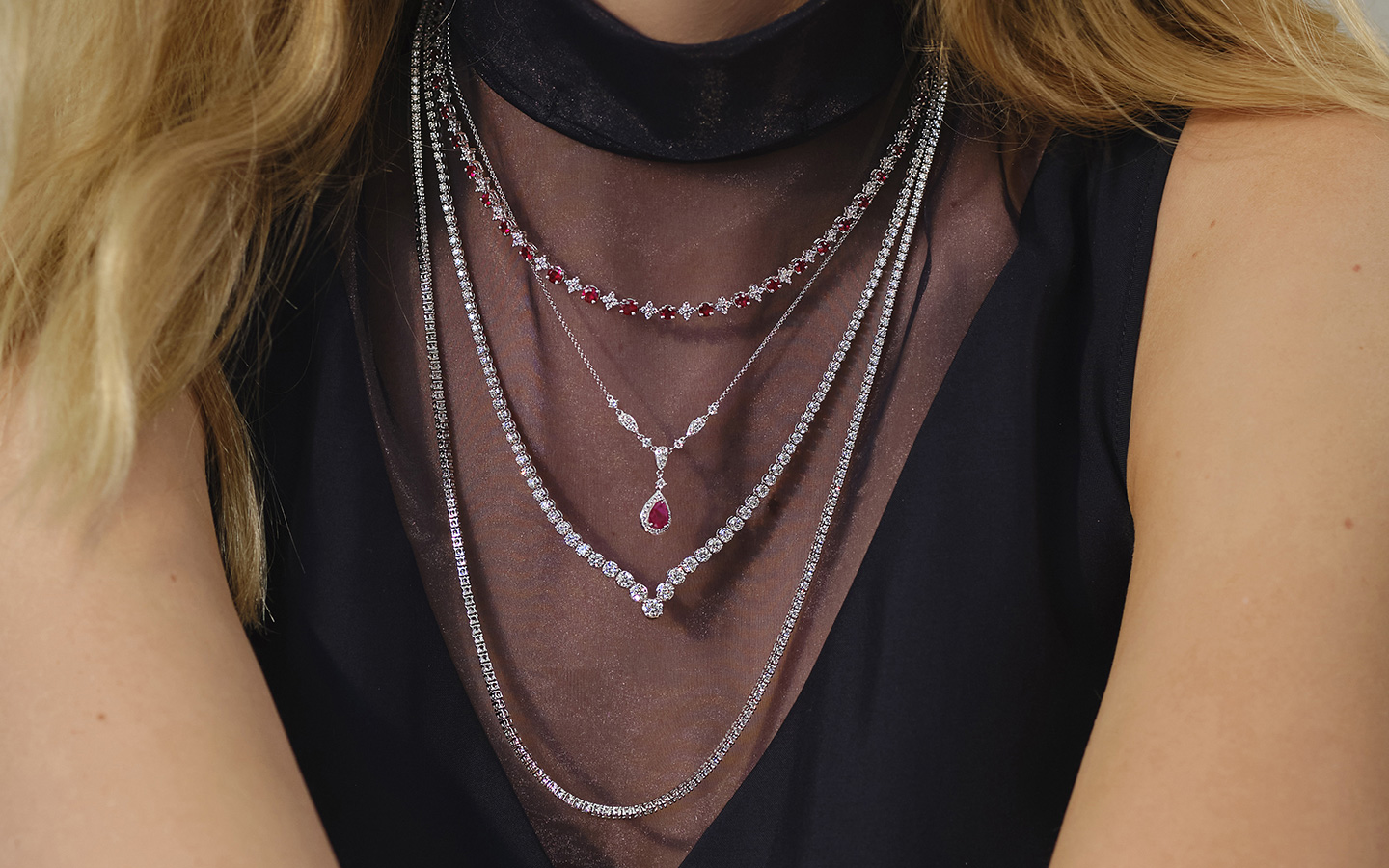
Diamond certification and grading reports help demystify the diamond buying process and are the only certain way to tell if a diamond is real. Reports from IGI and GIA make shopping for a diamond easier by:
- Easily outlining a diamond’s quality
- Providing details that can help with jewelry insurance policies
- Making it easier to compare diamonds across standardized factors
- Removing any doubt about the 4Cs of a specific diamond
- Providing reassurance on whether a diamond is natural or lab made
- Making it easy to identify if a diamond has ever been switched
- Outlining factors that impact the value of a diamond
We are proud to offer transparent IGI and GIA diamond grading reports for our loose diamonds in both natural and lab made styles. To view the report of a particular diamond, simply click the GIA or IGI icon on the diamond’s listing page.
If you have any questions about diamond grading or you’d like help choosing the right gem, contact us to speak with a non-commissioned expert.

